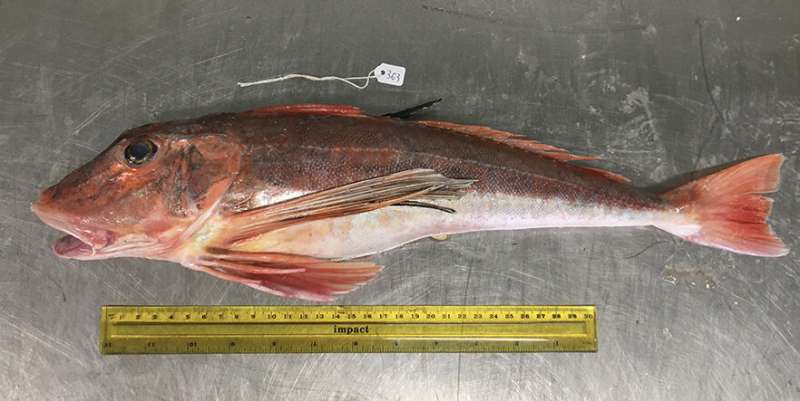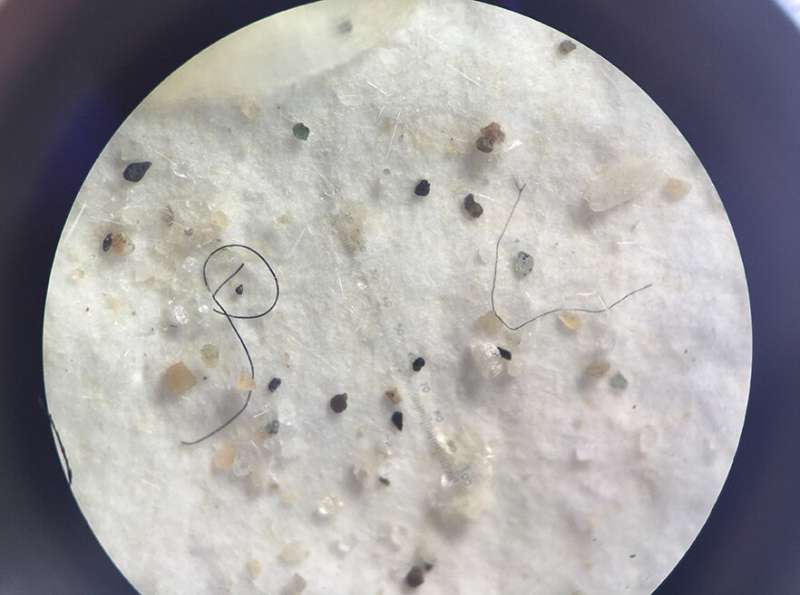Microplastics found in commercial fish from southern New Zealand

Fish ingesting microplastics is a global issue, and species in New Zealand's southern waters are no exception, a University of Otago study has found.
Researchers found microplastics in 75% of a sample of 155 commercially caught fish destined for human consumption.
Lead author Isabella Clere, of the Department of Marine Science, says plastics are prevalent throughout the world's marine ecosystems and greater awareness is needed on the implications of plastics entering the ocean environment.
"There is a lack of research on microplastic ingestion in the South Pacific and this is the first study to examine it in commercial wild fish from southern New Zealand.
"The abundance of microplastics found could pose a risk to human health through consumption of plastic contaminated fish, but more research is needed in this area," she says.
The study, published in Marine Pollution Bulletin, examined 155 fish from 10 species, including Red Cod and Tarakihi, caught off the Otago coast.
Study co-author Dr. Bridie Allan, also of the Department of Marine Science, describes the findings as "quite alarming."
"Because the fish were collected over the course of a year, rather than a single time point, this suggests that the presence of microplastics in our Southern waters are a persistent feature," she says.

Microplastics were found in 75% of fish, an overwhelming amount of which were fibers. Of the 391 microplastic pieces retrieved, 98% were less than 3mm.
"We looked at a range of benthic (bottom dwelling) and pelagic (surface dwelling) fish and found microplastics in the guts of all species, suggesting the ubiquity of microplastics throughout all ocean layers.
"A random selection of fish guts were analyzed to identify the plastic type, with the majority found to be polyethylene, viscose, polypropylene and plastic additives. Polyethylene is the most widely used plastic and also the most prevalent found in the oceans globally."
Ms. Clere says the findings highlight how microplastics are not just a localized issue, but a global one.
"Even in rather remote, low populated areas there are signs of plastic contamination within fish. Due to their unique nature being a lightweight and durable material, they are transported across oceans by the wind, currents and through marine organisms."
She encourages us all to have greater understanding and awareness of our plastic use and misuse.
"We need to take individual responsibility for the products we use, to ensure they do not find their way into any natural environment.
"The durable, strong nature of plastic which makes it such a useful material in society, also makes it not only a local but a global environmental issue."
More information: Isabella K. Clere et al, Quantification and characterization of microplastics in commercial fish from southern New Zealand, Marine Pollution Bulletin (2022). DOI: 10.1016/j.marpolbul.2022.114121
Journal information: Marine Pollution Bulletin
Provided by University of Otago




















